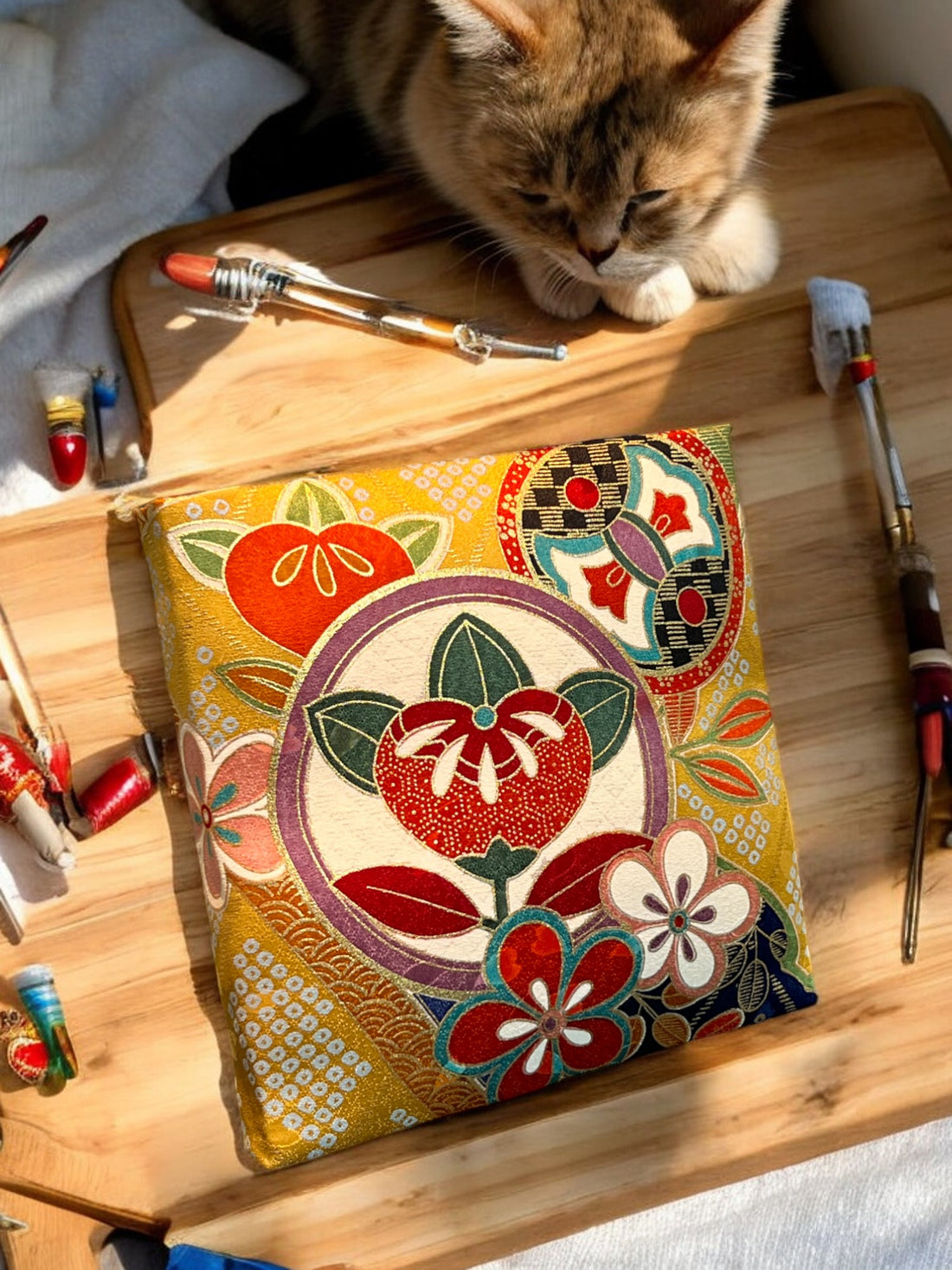“I want a room that looks stylish.” “I want a relaxing space.”
Do you have an ideal vision for your interior but struggle to bring it to life?
Finding the right answers requires careful consideration of room size, lifestyle, desired interior style, and furniture choices, making it a labor-intensive process.
In this article, we’ll explain tips for coordinating interiors from a professional perspective, incorporating the latest trends in design. By understanding these core coordination strategies, you’ll be able to create the interior of your dreams—making your time at home more enjoyable and ideal.
Interior Coordination Tip 1: Decide on Your Interior Style
The key to achieving a stylish interior is a sense of unity throughout the room. Simply arranging pieces you like together can result in a lack of cohesiveness. To avoid this, start by deciding on your interior style (or direction). Below are four popular interior styles:
Scandinavian Style
Scandinavian interiors originate from regions such as Norway, Sweden, Finland, and Denmark, known for their harsh, long winters. The focus is on creating a cozy and comfortable space, with soft colors and a pleasant atmosphere for spending extended time indoors.
Scandinavian design typically features high-quality, functional items, with a focus on wooden furniture that adds warmth to the room. The color palette is generally neutral, but adding an accent color can dramatically change the overall feel. Many homes in colder regions use underfloor heating, so furniture often has raised legs and soft, rounded edges as a design characteristic.
Natural Modern
Natural Modern is a popular, classic style known for its clean, simple lines and its broad appeal. It’s characterized by its use of sleek designs with a sense of cleanliness. The blend of natural and inorganic materials adds a refined and modern touch to the space.
To create a cohesive look, try to match the wood tones of your furniture and flooring for a harmonious and stylish coordination.
Mid-Century Modern
Mid-Century Modern refers to furniture and interior design created in the mid-20th century (1940s–1960s). The furniture of this era took advantage of technological advancements during wartime, utilizing materials like fiberglass and plywood to create pieces with flowing curves and elegant designs.
To achieve a cohesive interior, don’t limit yourself to only mid-century furniture. Instead, mix modern, urban elements to highlight the sophisticated feel of mid-century pieces.
Modern
Modern interiors emphasize a "cool, urban" feel with a luxurious, mature atmosphere. The color palette is subdued, with minimal color usage and a focus on simplicity.
Modern design minimizes unnecessary decoration, prioritizing functionality with the use of materials like stainless steel and glass. For a modern look, keep personal items hidden and use open space thoughtfully in the furniture layout.
Interior Coordination Tip 2: Focus on Color Coordination
Even though coordinating clothing colors comes naturally to many, interior color coordination can feel more difficult. Interiors aren’t just flat surfaces; they involve heights, widths, and depths, making color coordination harder to visualize. Additionally, the variety of materials and shapes adds to the complexity.
Changing the color scheme can dramatically alter the ambiance of the room. Here are some color coordination basics and tips:
The Golden Ratio of Color
Mastering the basics of color coordination can help you create a stylish room with ease. The recommended color ratio is:
Base Color: 70%
This refers to the primary color used in the room—usually for large areas like floors, walls, and ceilings.
Accent Color: 25%
This is applied to furniture, doors, curtains, and rugs. Although these items are smaller in area, they have a strong visual impact and significantly influence the room’s atmosphere.
This draws attention to specific points in the room. Rather than using bright, vivid colors, opting for dark tones can create a more sophisticated feel. For example, placing a walnut side table in an all-white room gives the space a modern edge.
Use a Consistent Tone
Similar to fashion, sticking to a maximum of three colors makes it easier to achieve a cohesive look. However, since interior items often consist of more than three colors, using consistent tones can help maintain unity.
Tones are groupings of colors based on their brightness and saturation, such as:
- Pale Tones
- Grayish Tones
- Vivid Tones
Using similar tones across different pieces creates a stylish and cohesive look for the entire room.
Create Color Connections
Color connections in interior design involve incorporating a color from one item into another, like pulling a color from a wall painting into a rug. These subtle links make the room feel more sophisticated and harmonious, even when the shapes of the items vary.
Interior Coordination Tip 3: Choose the Right Size
Balancing the size of the room with the size of the furniture is key to achieving a sophisticated interior. Here are a few things to consider:
Choose Furniture That Fits the Room
Furniture may appear a different size in the store compared to when it’s placed in your home. Stores often have high ceilings and open spaces, making it hard to gauge the scale.
Measure the furniture’s width, height, and depth, and check how it will fit into your space. If you don’t have a floor plan, measure the space where you plan to place the furniture.
Consider Traffic Flow
Without considering traffic flow, placing furniture can make a room feel cramped or awkward. For instance, although a circular dining table might seem more space-efficient, it actually requires more space for use compared to a rectangular table.
Ensure you leave enough space for people to walk around comfortably—about 600mm (24 inches) is a good general guide. Keep in mind, different rooms and furniture pieces require different considerations for traffic flow.
Check the Delivery Route
If you plan to buy large furniture, don’t forget to check if it can actually fit through your doors or elevators. For homes with small entrances, this step is essential to avoid any frustration later.
Interior Coordination Tip 4: Establish a Focal Point
A “focal point” is a term used in architecture and interior design that refers to a spot that naturally draws attention, like a specific art piece or a feature wall. Here's why focal points matter:
Benefits of a Focal Point
A focal point anchors the room and creates a sense of structure. For instance, hanging artwork can make that part of the room feel more intentional, and you can also use focal points to guide attention away from less desirable areas.
Choose the Focal Point Location
Each room has a natural focal point. In an entryway, this might be a piece of furniture or a display. In a living room, it could be a large window or a major piece of furniture. Understanding the natural flow of the eye (from left to right, top to bottom) helps in determining where to place your focal point.
Scandinavian Style
FRITZ HANSEN
When it comes to Scandinavian furniture brands, FRITZ HANSEN is a name that always comes up. This prestigious Danish furniture manufacturer is known for its innovative yet timeless designs. The brand is highly regarded for its functional masterpieces that offer modern yet enduring appeal.
Iconic pieces like the "Egg Chair" and the beautifully shaped "Seven Chair" are popular worldwide and embody the essence of Scandinavian design. In addition to furniture, the brand offers lighting and accessories that combine beauty with functionality.
CARL HANSEN & SON
CARL HANSEN & SON, founded by master craftsman Carl Hansen, has become synonymous with Danish furniture design. Known for its uncompromising craftsmanship and thoughtful designs, the brand produces pieces that reflect Denmark's proud tradition of craftsmanship.
One of the brand's masterpieces, the CH24 "Y Chair," has been beloved since its creation in 1950. The company also focuses on sustainability, carefully selecting the wood for its products and incorporating recycling efforts into its production. These are timeless pieces, meant to be cherished for decades.
PP Mobler
Although PP Mobler was founded relatively recently in 1953, it rivals long-standing manufacturers with its exceptional quality and craftsmanship. What sets this brand apart is its philosophy of using only the best techniques, even in parts that aren’t visible.
The pride of their craftsmen is evident in the production of their iconic piece, "The Chair," which has earned the prestigious title of "the chair of chairs." This attention to detail makes every piece worth its price.
Modern Style
Molteni & C
Molteni & C is a historic Italian modern furniture brand that exudes sophisticated urban appeal. One of their signature pieces, the "505" storage system, allows for nearly endless customization, creating a perfect balance between design and function.
By eliminating unnecessary elements and focusing on what truly matters, Molteni & C offers a sleek, refined style. The brand is also known for its development of advanced materials and technologies, ensuring that every piece achieves both beauty and strength.
B&B ITALIA
Founded in 1966, B&B ITALIA initially started as a subsidiary of Cassina. However, the company quickly gained attention with its innovative use of foam materials in its sofas, eventually outpacing Cassina's sales.
B&B ITALIA remains committed to research and development in materials and manufacturing techniques, providing designers with new possibilities. Their "Diesis" sofa, released in 1979, is considered an iconic piece of contemporary design, making it a perfect addition to a chic and sophisticated interior.
Cassina
Cassina is often referred to as the king of modern furniture. Founded in 1927 in the outskirts of Milan, this brand became famous for its collaboration with designers, resulting in high-quality, industrially produced furniture.
One of the brand's most famous collaborations was with modern architecture giant Le Corbusier, who designed the iconic LC series. Only Cassina is authorized to manufacture these pieces, ensuring their high quality and design integrity.
Natural Modern Style
CondeHouse
CondeHouse is one of Japan’s leading furniture brands, hailing from Asahikawa, Hokkaido. Using local wood whenever possible, their simple yet refined designs bring a modern sense of Japanese aesthetics to life.
By collaborating with renowned designers, CondeHouse maintains a blend of modern and traditional influences, resulting in memorable, high-quality pieces.
Porada
Porada’s history dates back to 1948 when it was a small woodworking workshop in Italy. Limited to woodworking at the time, Porada honed its craft, becoming known for its exceptional expertise in wood.
Today, the brand is admired for its elegant wooden furniture, with curved designs that make it stand out as "the world’s most beautiful wooden furniture." Porada has captured the hearts of furniture lovers around the globe.
Hida Sangyo
Located in Takayama, Gifu Prefecture, Hida Sangyo is a long-established furniture manufacturer with over 100 years of history. Their high-quality craftsmanship is reflected in every piece, with wooden components guaranteed for 10 years—an indication of their confidence in their products.
With around 4,000 repair requests annually, their experienced craftsmen meet each customer’s needs. Every piece is custom-made with great attention to detail, ensuring a long-lasting and beautiful product.
The Latest Trends in Interior Design
Curved Furniture
As more people spend time indoors, there’s a growing demand for more comfortable interiors. One of the latest trends in response to this demand is curved furniture. Soft, rounded furniture brings a warm, inviting atmosphere to a space, greatly enhancing comfort and ambiance.
Maximalism
While minimalism has become a lifestyle category, maximalism is emerging as the new trend in interior design. Maximalism incorporates vibrant colors, art, and numerous decorative elements. Although it can be difficult to coordinate, this style appeals to those with a more refined eye for design.
Biophilic Design
Based on the idea that humans have an innate desire to connect with nature, biophilic design is a growing trend first seen in office spaces, and it’s now making its way into residential interiors. Companies like Google and Amazon have embraced this concept in their office designs.
One key aspect of this trend is incorporating outdoor furniture indoors, creating a seamless connection between nature and living spaces. Simple, high-quality furniture paired with plenty of greenery creates an easy-to-adopt biophilic design style for any home.

